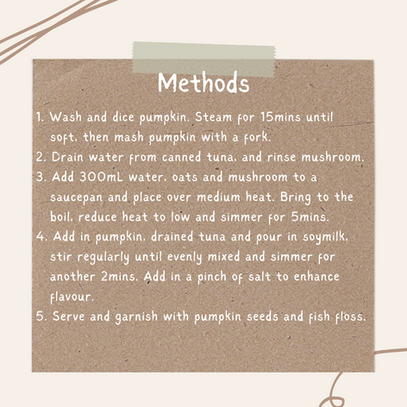Banana Oat Pancake (Serves 2)

Dietitian’s Tips:
Banana is one of the low GI fruits. A ripe banana has a GI value of 51 while an unripe banana has an even lower GI value of 30. It is a good source of dietary fibre which slows down the absorption of carbohydrates thus stabilizing our blood glucose level, and preventing constipation. The sweetness of a ripe banana can act as natural sweetener in producing baked goods, which minimises the usage of added sugar.
The Salmon “RainBowl” (Serves 1)
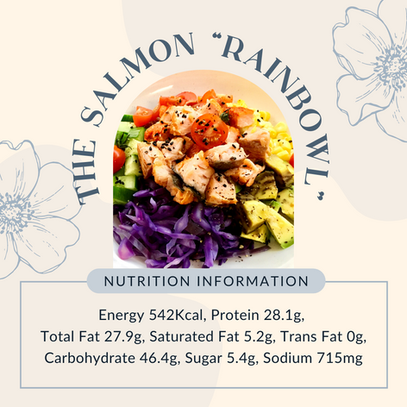
Dietitian’s Tips:
Deep sea fish is packed with omega-3 fatty acid, which is a type of polyunsaturated fatty acid. This helps to protect our heart and blood vessels by lowering the LDL (bad) cholesterol and increasing the HDL (good) cholesterol concentration in our blood. Its anti-inflammatory property also helps to prevent and alleviate inflammation in our body. A weekly consumption of at least 150-200grams of deep-sea fish is recommended, such as salmon, tuna and mackerel.
Pumpkin Oat Porridge with Tuna (Serves 1)
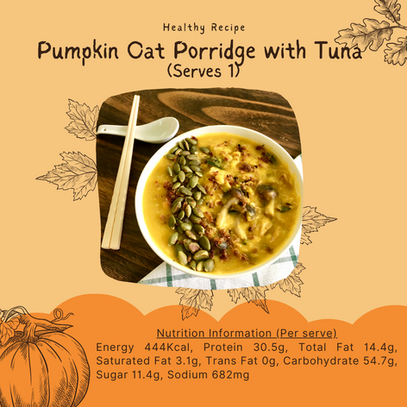
Dietitian’s Tips:
Rolled oat, quick oat and instant oat have different effects on glycemic control. In fact, Rolled oat is more diabetic friendly as it is the least processed among the three, its complex structure requires a longer duration for digestion and metabolism, thus stabilizing our blood sugar level. Since quick oat and instant oat are more processed, they can be broken down and absorbed into the bloodstream easily, therefore draws a greater effect on blood glucose level. Oat has a creamy texture which can be a low GI alternative to white rice in making congee.
Capsicum Rice Cup (Serves 1)
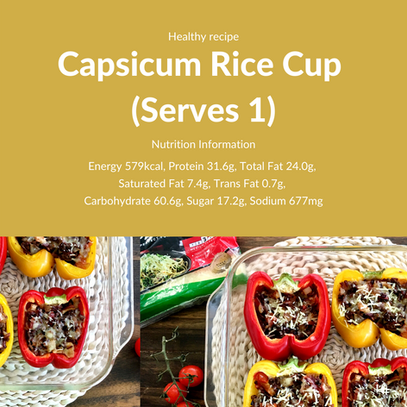
Dietitian’s Tips:
Rice varieties such as red, brown and black rice give us a better glycemic control. This is due to the preservation of the bran and endosperm layers within the rice granule. These layers are a source of Vitamin B complex and dietary fibre which helps to slow down carbohydrate absorption thus stabilizing our blood sugar level. Keeping rice overnight also helps, as the cooling process of starchy food such as rice, pasta, potato and sweet potato produces a substance called resistant starch, its structure is comparable to dietary fibre which also stabilises the blood sugar level.
Mexican Chicken Wrap (Serve 1)
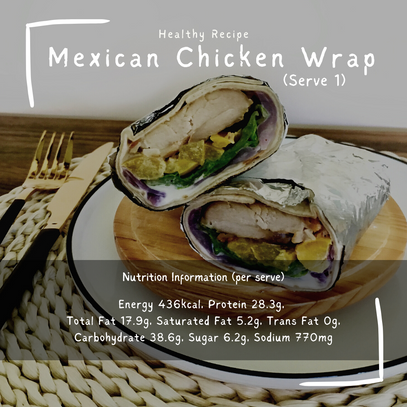
Dietitian’s Tips:
Eating a colourful diet helps us to obtain different nutrients. For example, red cabbage is packed with dietary fibre, anthocyanin and Vitamin C. Dietary fibre helps to stabilise our blood sugar level and stimulate bowel movements to prevent constipation. Anthocyanin is a kind of natural colouring with strong anti-oxidizing properties, this protects our vision and body cells from damage. Vitamin C helps to enhance our immunity, facilitate iron absorption and protect our gums. Yellow capsicum is a source of Vitamin A which also enhances our immunity and protects the mucosal layer in our respiratory system.








